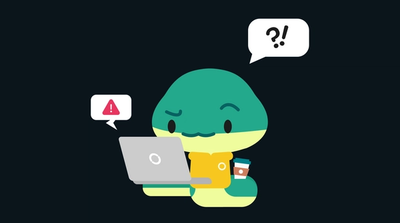“What’s the difference between SoSy and computer science?” is probably the number one question we get asked at SoSy events, when speaking to high school students, and on our Discord for good reason! Software Systems in name is a program unique to SFU and there aren’t many easily accessible resources out there explaining the differences aside from a Reddit post by one of our previous presidents (Thanks Hilal!). This guide written by the student society will act as the comprehensive guide for this question and we’ll keep updating it as new questions come in or the program changes.
In Brief
Software Systems is a more specialized degree that is under the SFU’s School of Computing Science that focuses on skills for developing practical, high-quality software for industry. It is primarily based at the Surrey campus which means its staff and student societies (us) operate primarily from here.
The Nitty Gritty Academic Parts
Have a look at our courses page to get more information about the different classes that make up the SoSy program!
Lower Division
The lower division is not as different between CS and SoSy, with the primary difference being the introductory CMPT courses. You are free to take a course that is offered at any of the 3 SFU campuses, but most of these courses will have a Surrey offering at some point in the year. The similarities between programs also allows for easier transferring between the two.
Main points include
- The first year CMPT courses are 130/135 as opposed to CMPT 120/125. CMPT 130 teaches C++ instead of Python. More importantly, CMPT 130 is only offered in Surrey for the SoSy/MSE/SEE programs in a smaller class size which allows first year SoSy students to meet their fellow Surrey peers quickly.
- CMPT 213 (Object Oriented Design in Java) is a requirement. This course is useful for learning early programming concepts and languages that are common in industry. Great for getting a first co-op as a 2nd year.
- BUS 232 can be taken in place of STAT 270/271 to fulfill the statistics requirement for the degree, similar to SFU’s Data Science program. This course focuses less on the theory of statistics and more on its practical applications such as by teaching Excel.
Upper Division
This is where the differences between SoSy and CS start to show more. With its focus on software and industry practices, the courses that SoSy students take to fulfill their upper division requirements have been streamlined so that however a student may build their degree, they will have taken classes that have real industry value. While CS students can take these courses, SoSy students have reserved seats in the class that can allow them to bypass the waitlist.
Some highlights include
- CMPT 373 and CMPT 473 are one of the few fully required Software Systems courses but for good reason. With extensive time spent learning about how to write software that is efficient, maintainable, and reliable, these courses are key in learning how to write industry-level code.
- Unlike in CS, you don’t need to do MACM 316, one of the upper division math courses. It is a prerequisite for some upper division 3D modeling and computer animation courses so if you want to do it you are still free to take it and it will fulfill upper division CMPT/MACM credits that are required for graduation.
- Capstone (CMPT 494 and 495) can be taken to fulfill graduation requirements. Capstone is different from a traditional course as it involves working with a faculty supervisor and a small team of other SoSy students to complete a project. These projects are designed by faculty and can be in any area of computing. They are a great way to gain experience working on a long-term project and add diversity to the SoSy degree.
SFU won’t tell you this but in our very biased opinion SoSy professors are also better.
The Surrey Campus
The SoSy program is based in SFU’s Surrey campus,
- It’s also the home of SFU’s Mechatronics Systems Engineering, Sustainable Energy Engineering, and Interactive Arts and Technologies programs so you will meet and make connections with many people in those programs.
- Central City mall is right below the Central campus building and offers a food court, Walmart, T&T and other nearby food options (that are cheaper than at Burnaby).
- It’s newer and less busy than the Burnaby campus so it’s easier to find good study spots and bookable study rooms. Many of the study rooms also have TVs that can be connected to when working in groups.
- Although it’s a Surrey program, oftentimes you will have to go up to Burnaby to take classes as they are more commonly offered each semester there. As the program grows we hope this will become less common as more students can fill seats in Surrey.
- Us at the Software Systems Student Society primarily host our events at the Surrey campus, including our annual Frosh and SystemsHacks. Since SoSy is under the School of Computing Science, SoSy students are also members of the Computing Science Student Society so students can take advantage of their events if they find themselves in Burnaby.
Q-and-A
- When I graduate, what will it say on my degree?
It will say Bachelor of Science, Major Software Systems. Commonly, SoSy students will put BSc. Computing Science - Software Systems on their resume as the program is still under the school of Computing Science.
- What kind of jobs can I get with a SoSy degree?
Plenty of options! SoSy grads have become Software Developers, Product Managers, Systems Architects, Game Developers, and so much more. They’ve also worked from all ranges of companies from startups to Amazon.
- Is SoSy an engineering program?
SoSy is not an accredited engineering program. This is why our degree is a Bachelors of Science and not Applied Science.
